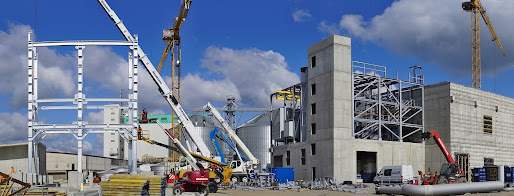Improving Handover from Construction Phase to Commissioning Phase
Handover of
subsystems to the commissioning team from the construction team is perhaps one of the
most challenging facets of project commissioning. Having said that, it shouldn’t
have to be complicated and all you need is to plan it thoughtfully in advance.
Obviously, the
construction phase plan requires to be fully aligned with the commissioning phase
plan. This ensures that all parts of the project are completely ready and easily
available when you require them to facilitate the overall start-up and commissioning
sequence.
Projects
today are more complex than ever before, which makes the process of handover
even tougher. Given the sea of information that needs to be handled during the
handover, spreadsheets and paper are not the most suitable tools to manage such
massive details. Way better options are now available that could streamline the
entire process while ensuring that no details are lost during the process. Commissioning
professionals should leverage commissioning management systems software to handle the large amount
of data that exists within a project.
Construction Quality Processes that Lead to the Handover Process
The
commissioning phase will only be a success if appropriate QA/QC processes are executed
during installation activities before commissioning. A quality management
system (QMS) is therefore important for achieving success.
Multiple inspections
and test plans (ITPs) are needed once the installation is complete. This produces voluminous paperwork that requires to be archived and monitored for future reference.
While this was done earlier using hard ITP copies, the sizeable volume of
information available on projects today renders manual tracking somewhat unmanageable.
Manually
completing every ITP on site may result in errors since handwriting may be indecipherable
or data may be lost during the process. The QA/QC processes that lead up to
handover must find out deficiencies to be fixed prior to commissioning, or it must
complete before handover to the project owner.
There will be
so many minor details to track and manage, which can only be done with accuracy
using the best
commissioning software to make sure that nothing is missed. With multiple
elements being monitored through the commissioning as well as the construction phase,
software solutions are the key to ensuring a smooth transition between different project
phases.
Creating an Integrated Construction and Commissioning Schedule
The list of
milestones for every completion defines the important handover-specific dates needed
for every subsystem that are involved in the project schedule. This list offers
guidance to construction professionals on how to plan the work. Any unachieved milestone
dates must be identified well before time so as to discuss beforehand how to
plan the work appropriately with the commissioning team.
The
integrated construction and commissioning schedule is assessed quite often –
starting with monthly reviews at the start of construction and subsequently
increasing the frequency as mechanical completion milestone dates approach. Any
delay requires close monitoring to find out whether or not it will affect the
commissioning process – and if so, how to avoid such delays.
When
construction and commissioning schedules are followed separately, the collaborative
discussion becomes much tougher. Without a complete understanding of the
effects of construction-specific delays, the project team cannot come up with mitigation
solutions.
Today’s commissioning management system software
features a forecast function that can automatically discover effects to the
project’s in-service date. With advance notification of possible problems, the
project team can act proactively to deal with the problems while avoiding expensive
delays to the handover process.
Pre-Commissioning Activities
Mechanical
completions and ITPs must be defined beforehand so that the commissioning team gets
to know what they would receive. Also, pre-commissioning checklists require to
be created beforehand so that the necessary testing can be done without any delay
once received from the construction team.
Proper documentation
is required to lay out the scope of construction vs. commissioning. Pre-commissioning checklists are needed to guide the team on what inspections need to
be carried out, when and by whom. These checklists have been in use for several
decades to check mechanical and electrical equipment. While the inspections to
be done on regular equipment has not changed with time, every project needs to develop
a new checklist.
But why?
Let’s understand this with an example. The inspection to be done during the
pump’s initial run-in includes measuring current draw, vibration, flow rates,
and inlet and outlet pressure. These are the same set of inspections on a pump that
has been performed for years. So why there’s a need to re-develop this
checklist for every project? Rather, a standard checklist for regular equipment
is required.
The best commissioning software
packages of today include such checks in project-specific checklists with the
ease of “drag and drop”. It’s no longer required to find a past project’s
checklist and change the document’s title for the new project at hand with a similar
list of inspections. These resources facilitate easy checklist creation,
instead of re-creating it for the same equipment on each project.
Taking things
a step ahead, data gets recorded into software packages. A physical copy of the
checklist is no longer needed on the site which often results in data entry
errors. Field professionals feed information directly into online checklists, where
it is registered and assessed against the criteria of pass/fail. Once done,
checklists are archived to be included in the final turnover packages to the project
owner.
Coordinating Construction and Commissioning Work
In most of
the projects, some commissioning and construction activities do overlap. It is highly
unlikely that all construction activities are cent-per cent complete and the
construction team has moved away from the site before the commissioning team takes
over the site. The commissioning team may start testing several systems when a
few subsystems are still under construction.
Working in such
a situation requires close coordination and monitoring. It would not be safe to
have one team powering up systems for the very first time while another team is
still installing it. Formal handover and mechanical completion documents denote
the transfer of custody/care/control of a given subsystem from one team to
another. This is, in fact, crucial to determine which team is bearing the
responsibility to find out the day-to-day activities that would take place on a
specific subsystem.
Once a
subsystem is handed over to the commissioning team, they will determine the
boundary isolations that require to be established and the lockout tag out (LOTO)
requirements that have to be in place. The LOTO and PTW processes defined on-site must be followed by all teams involved.
The
construction team will require working within the predefined boundary
isolations to keep themselves from any commissioning or even pre-commissioning activities
on a neighbouring subsystem. Any changes to boundary isolations must be reported
and coordinated beforehand to ensure all teams can work safely.
To Conclude
If not
planned for well in advance, the handover from construction to commissioning
can become extremely challenging. There are too many details to figure out to
make the handover smooth, beginning with an appropriately executed QMS. Moreover,
the volume of information on today’s project entails making use of more comprehensive
processes and tools, compared to using simple paper or spreadsheets.
Never assume that
these details will automatically be determined at the time of handover – any
items that are missed between commissioning and construction will result in
unsafe working conditions, incomplete systems and/or project delays. The
construction, as well as commissioning teams, requires working in close
collaboration to plan for a smooth handover.




Comments
Post a Comment